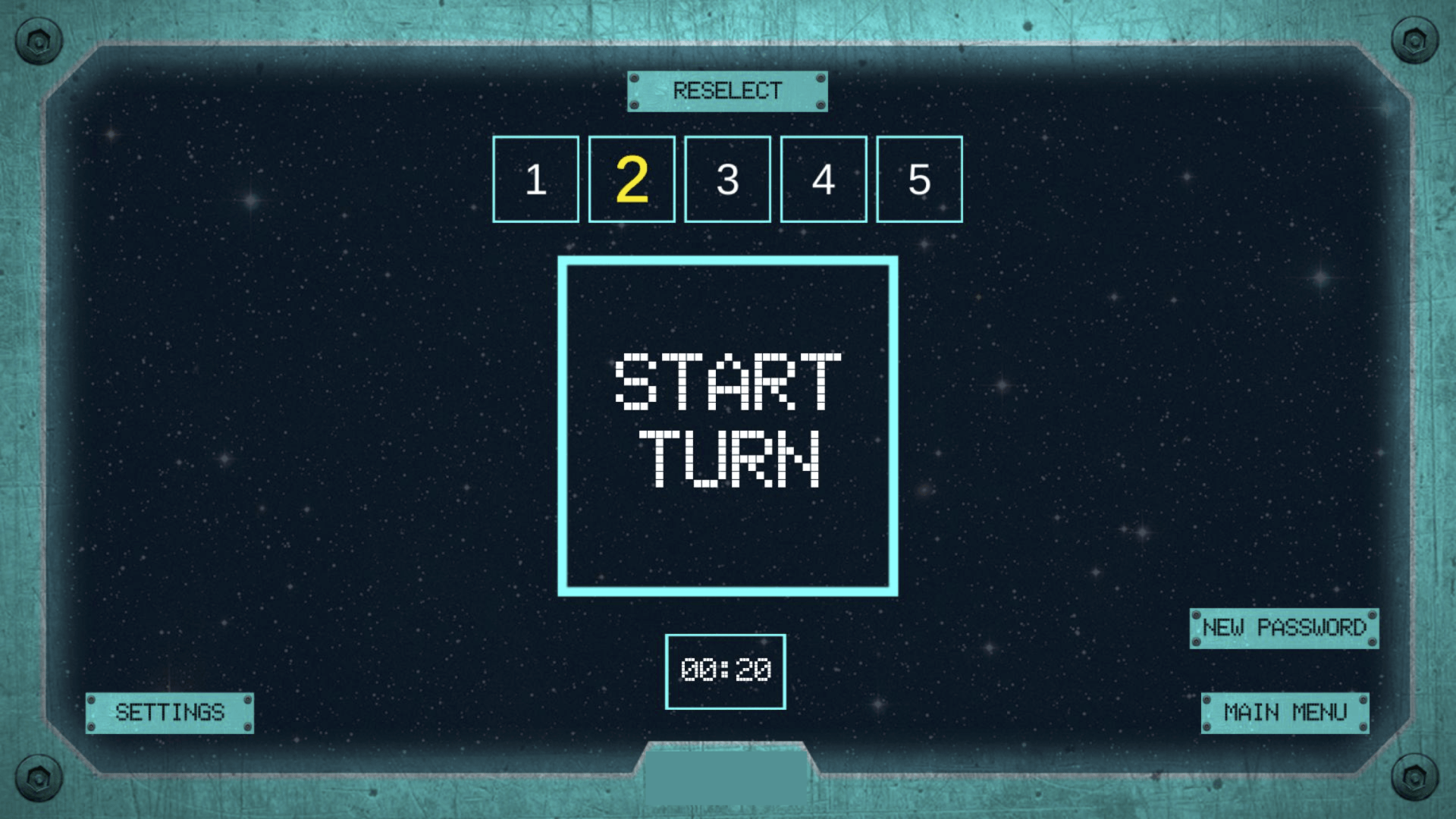Galactic Code
Galactic Code is a team building, password decoding game created for internal use at the client company.
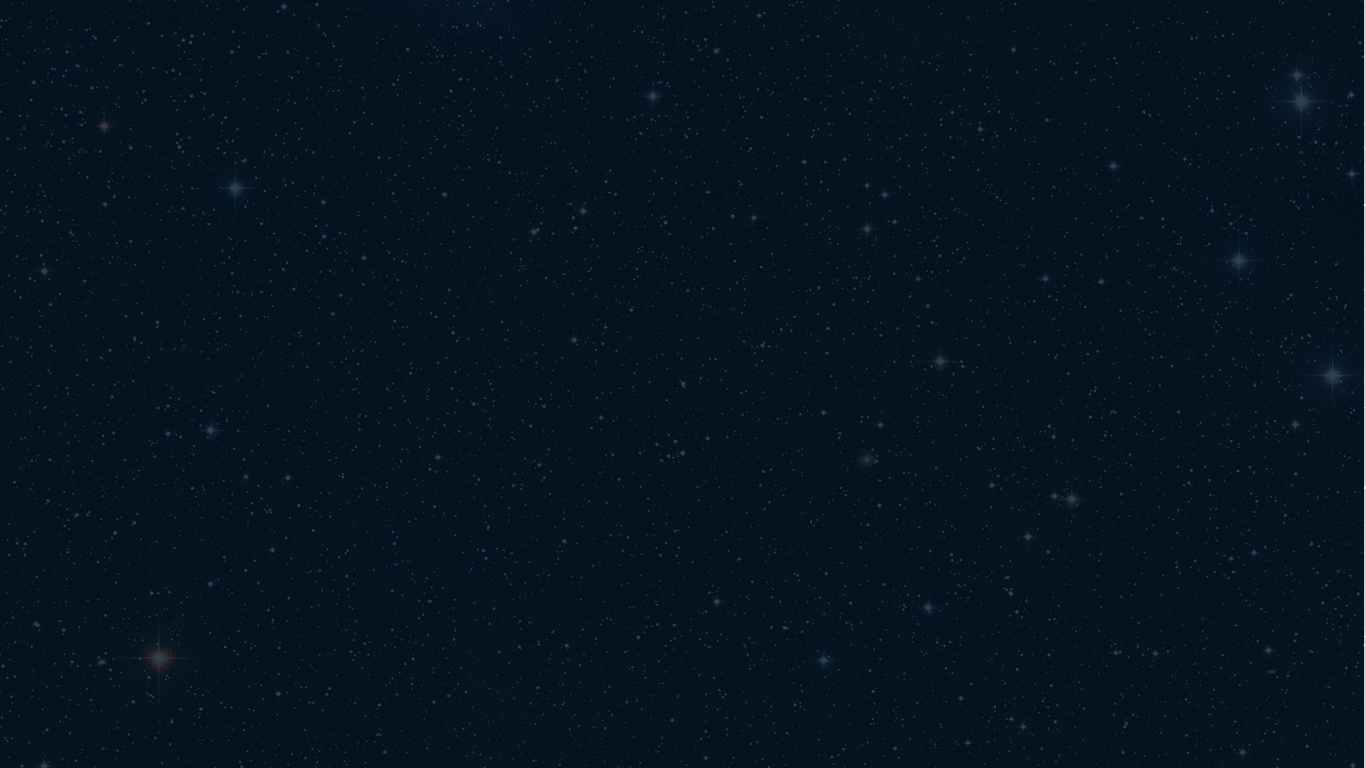
Company
NDA Insurance Company
Roles
- UX Designer
- Game Designer
- Artist
Team of
5
Duration
2021
Platform
Browser
Genre
Puzzle
Case Study
• Research
• Creative Problem Solving
• Cross-functional Collaboration
• Game Design
• Research
• Creative Problem Solving
• Cross-functional Collaboration
• Game Design
• Research
• Creative Problem Solving
• Cross-functional Collaboration
• Game Design
• Creative Problem Solving
Project Overview
In the wake of the COVID-19 pandemic, a client company transitioned all operations, meetings, and events online. While the shift to remote work ensured business continuity, it also introduced significant challenges in maintaining team cohesion and employee engagement across departments.
Problem
After the first lockdown, the company reported a sharp decline in participation and enthusiasm during virtual meetings and team-building exercises. The lack of face-to-face interaction led to decreased morale, weakened cross-team relationships, and difficulty in fostering meaningful collaboration across different levels of management.
Client Goals
- Reduce the impact of geographic dispersion associated with remote work
- Promote relationship-building across multiple tiers of management
- Create opportunities for employees to work together in solving a shared challenge
- Ensure the experience was accessible to all employees, regardless of technical literacy
- Design an activity that fit within a 30–60 minute virtual meeting window
Needs
- Include company branding, adhering to company design and branding guidelines [company branding has been removed from all images as per the NDA]
Wants
- Navigation to be as easy as, or easier than, the tools currently used at the client company
Desires
- Immersion in the storyline
Game Design
• Game Design
• Playtesting
Solution
To address these goals, I collaborated with the team to design a timed puzzle game specifically for remote play, built to encourage engagement, cooperation, and fun. The design approach centered around the following principles:
- Make communication non-optional: The game mechanics required constant verbal collaboration, ensuring everyone remained active and engaged.
- Everyone plays both roles: Participants experienced both sides of the game, increasing empathy and mutual understanding across roles and departments.
- Foster friendly competition: Lighthearted competitive elements kept the energy high while still emphasizing teamwork.
- Engage through distraction: The game served as a creative mental break from daily stressors, offering a positive and immersive experience.
- Design for inclusivity: The rules and interface were easy to learn, accommodating players with varying levels of technical comfort.
The final product resulted in a dynamic, team-based experience where clear communication and full participation were essential for success.
Gameplay
Galactic Code is played in groups of six with five Assistants and one Decoder.
- The first Assistant is shown a single symbol as the 15 second timer starts.
- The Assistant describes the symbol to the Decoder, who will try to correctly guess the correct symbol out of the 18 shown to only them. The Decoder may ask clarifying questions.
- Once the 15 seconds are up or a symbol is chosen, points are awarded for correct guesses.
- The next Assistant is shown a symbol, and the process repeats until the five-symbol password is completed.
- At the end of the round, a fully correct password will grant bonus points. The group then moves to a new round where a new password is generated and a new Decoder is selected.
The game ends after 30 minutes, and the final score is tallied from the accumulated points from each round.
1.

2.
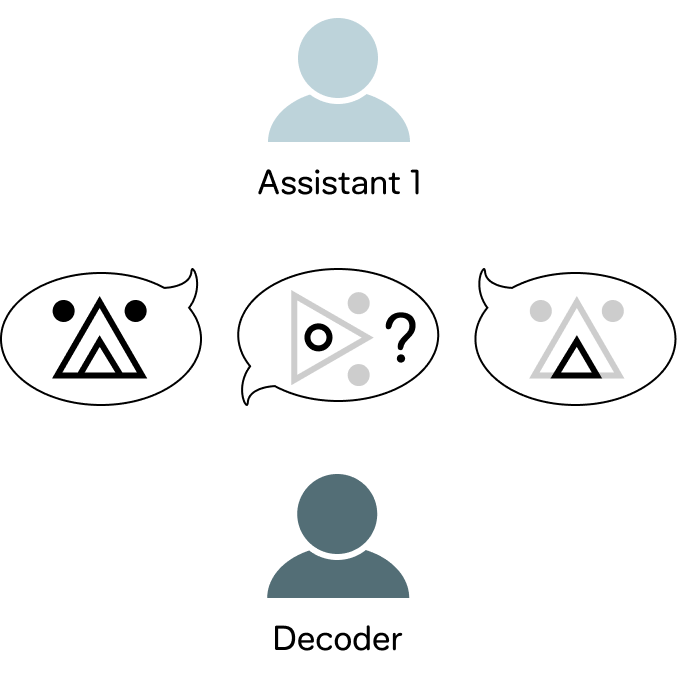
3.
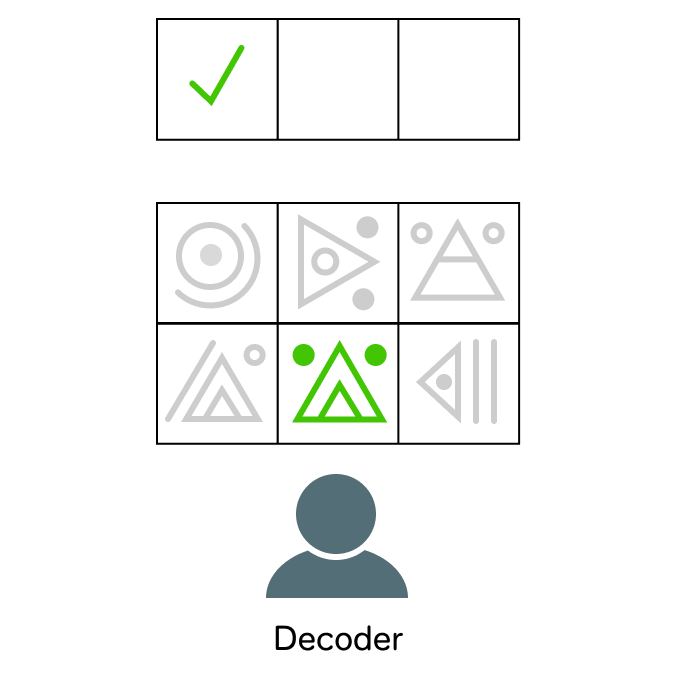
UX Design
• UI Design
• Accessibility
• 2D Art
• Wireframing
• Mockups
• UI Design
• Accessibility
• 2D Art
• Wireframing
• Mockups
Symbols
The UI design aimed to strike a careful balance between presenting a fun, mentally engaging challenge and keeping the experience simple enough for anyone to play. The symbols were intentionally designed to contain multiple similar elements—introducing just enough visual ambiguity to make describing and distinguishing them challenging—without being so complex that the game became frustrating or inaccessible. This helped maintain the game’s pace while ensuring that the majority of the difficulty came from communication and teamwork, not from deciphering the symbols themselves.
To further enhance accessibility, we originally used green and red indicators for correct and incorrect guesses, but later introduced a customizable color picker to accommodate players with red-green color blindness, ensuring that everyone could participate fully and comfortably.

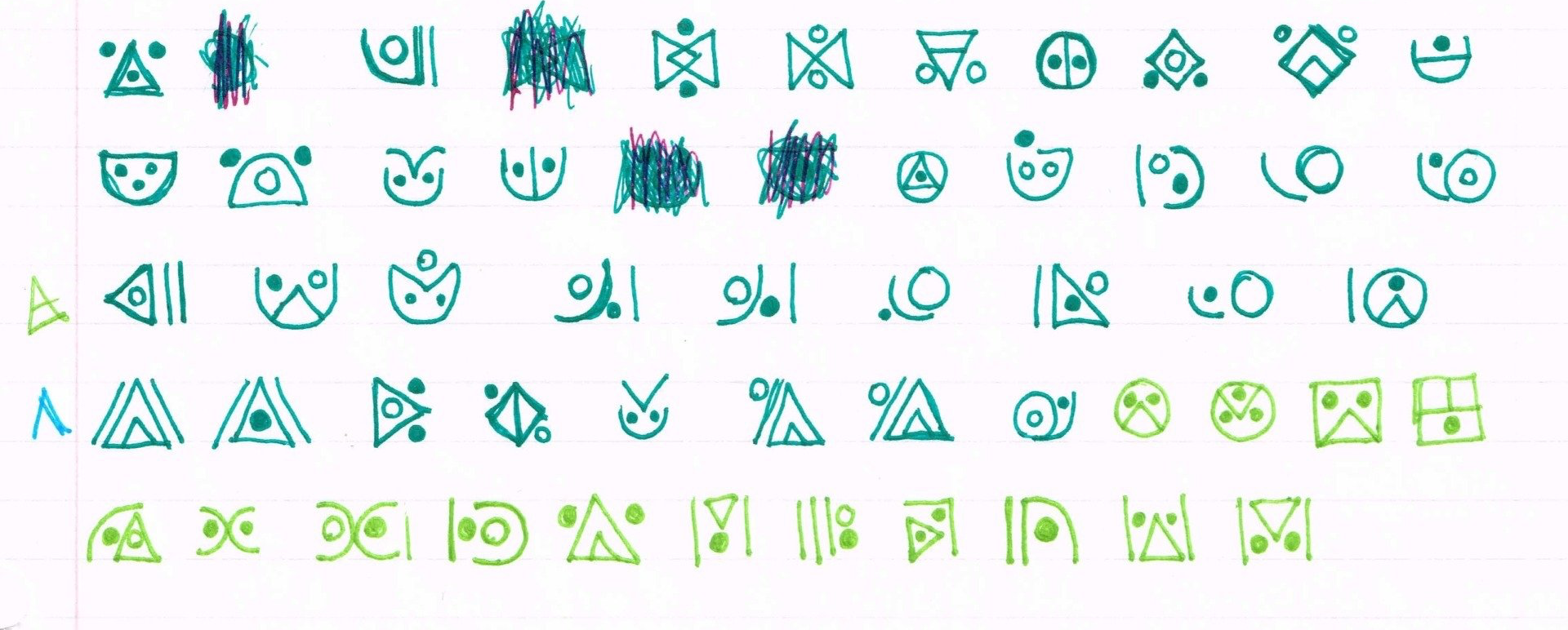
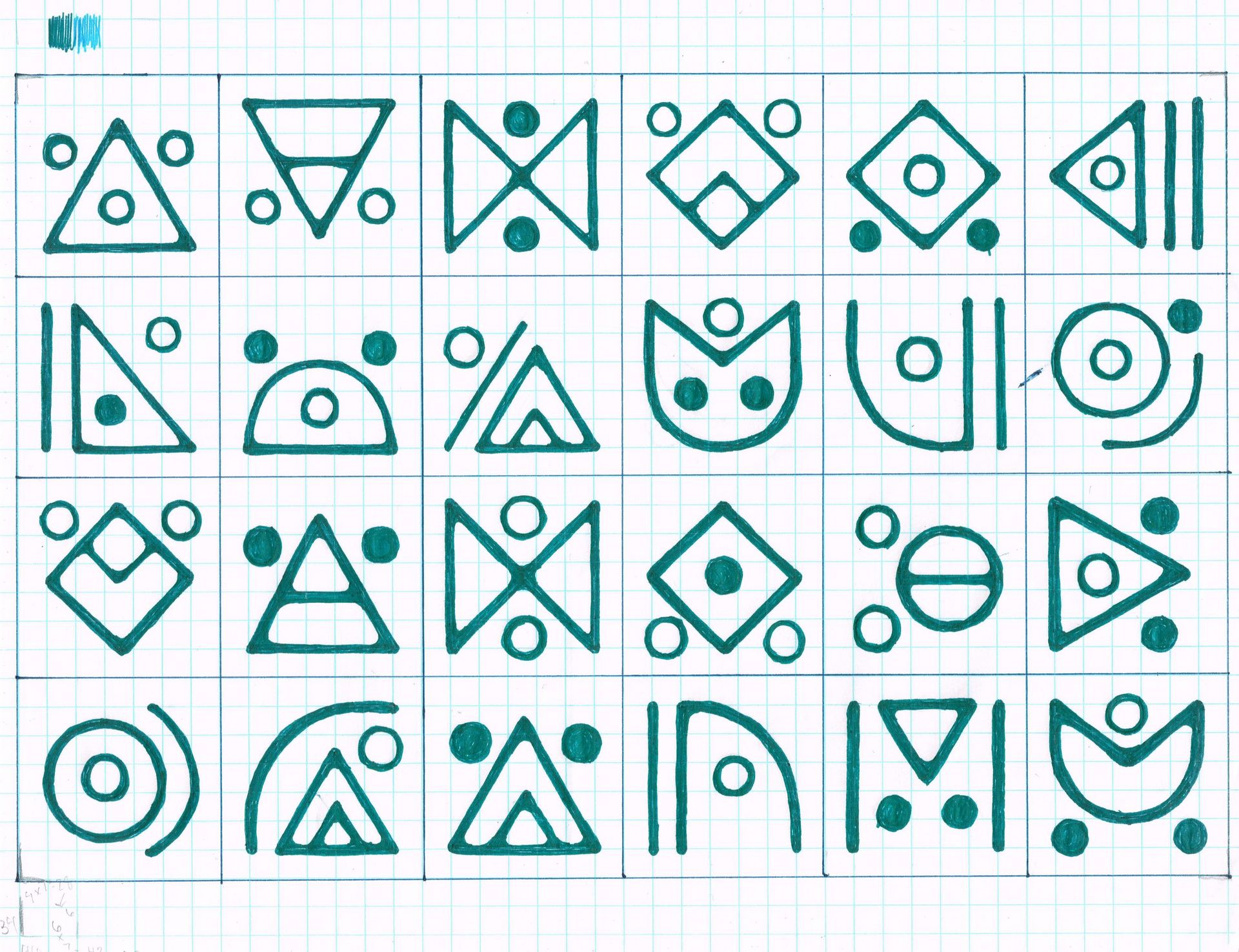
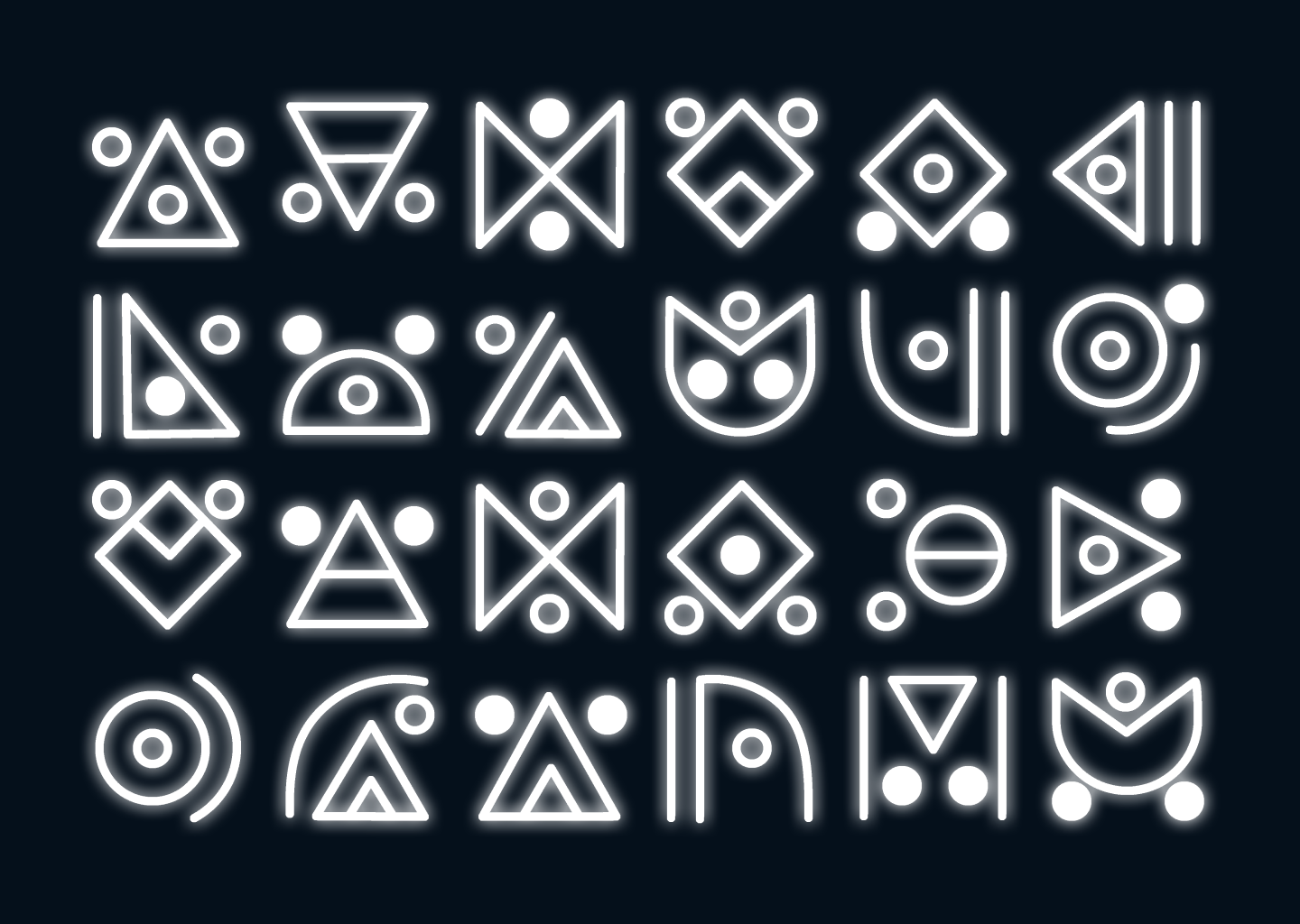
User Interface
To support the client’s goal of providing a meaningful mental break during the isolating early months of the COVID-19 pandemic, I designed the interface as the central hub of a spaceship—intentionally placing players in a setting far removed from everyday life. All interactive elements were integrated into a single screen to keep navigation seamless and intuitive, allowing players to stay focused on collaboration rather than figuring out where to click next. The interface also incorporated the client’s branding in a subtle but consistent way, reinforcing their identity while keeping the design cohesive and engaging.
Wireframes
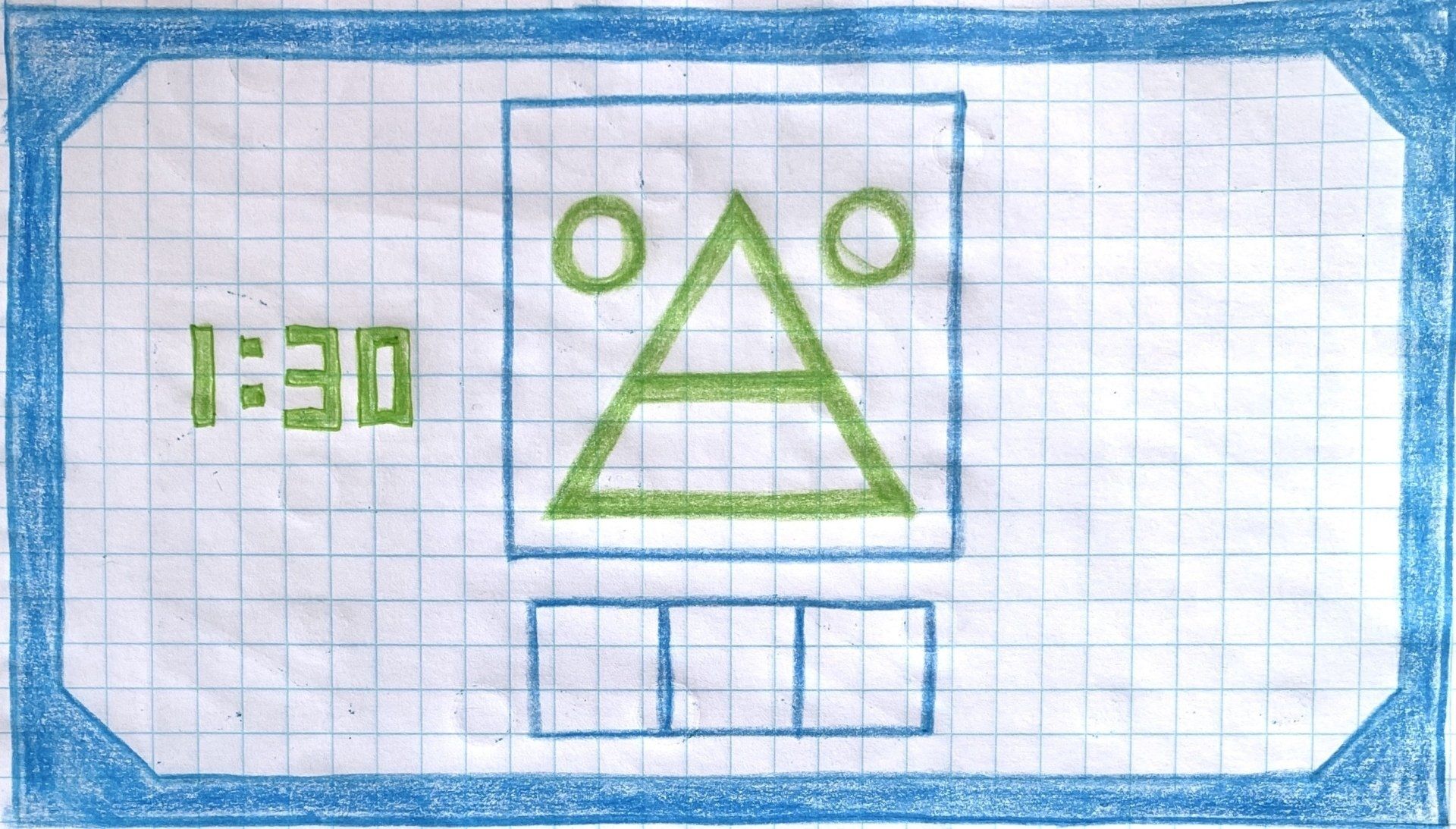
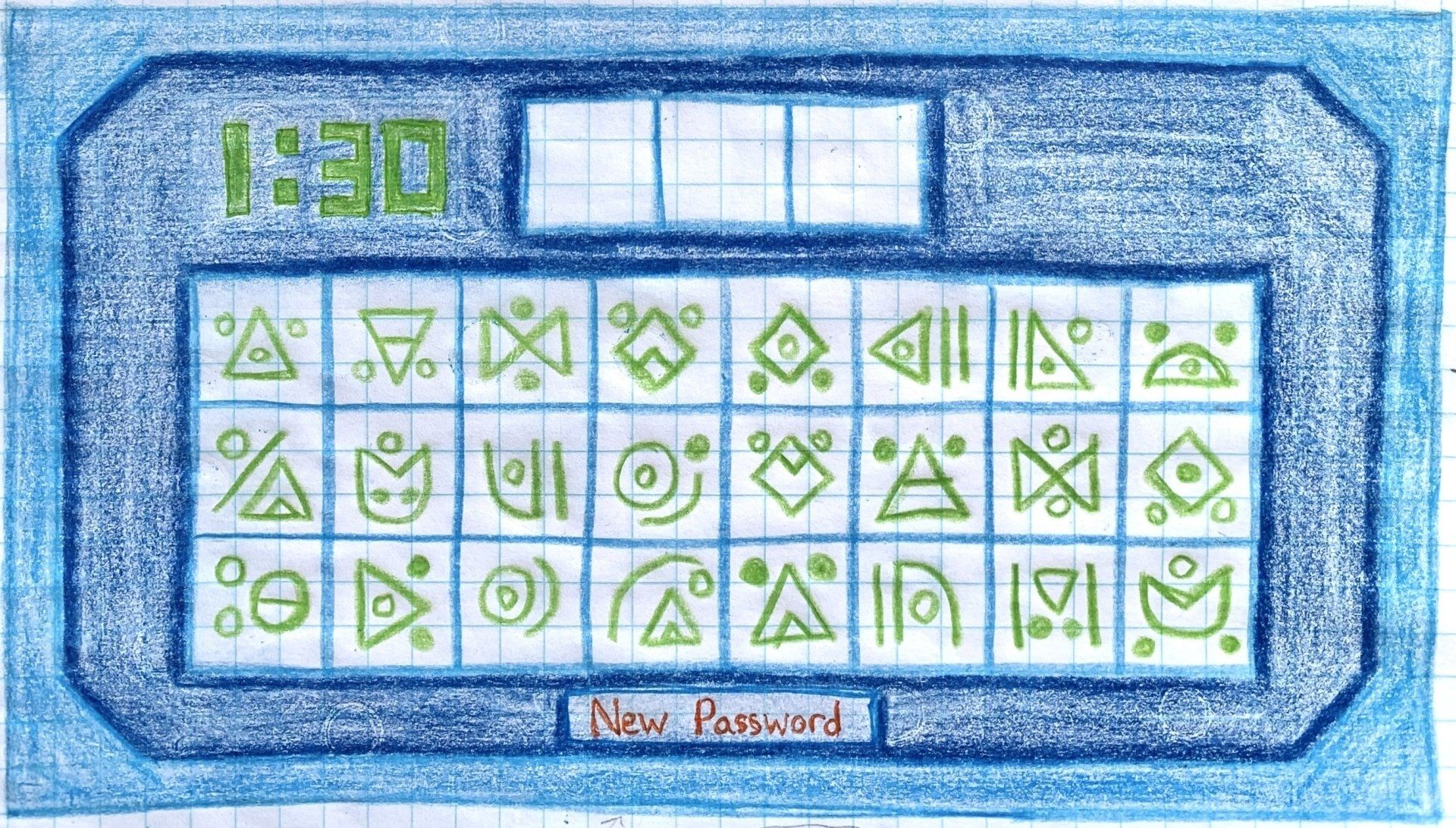
Mockups
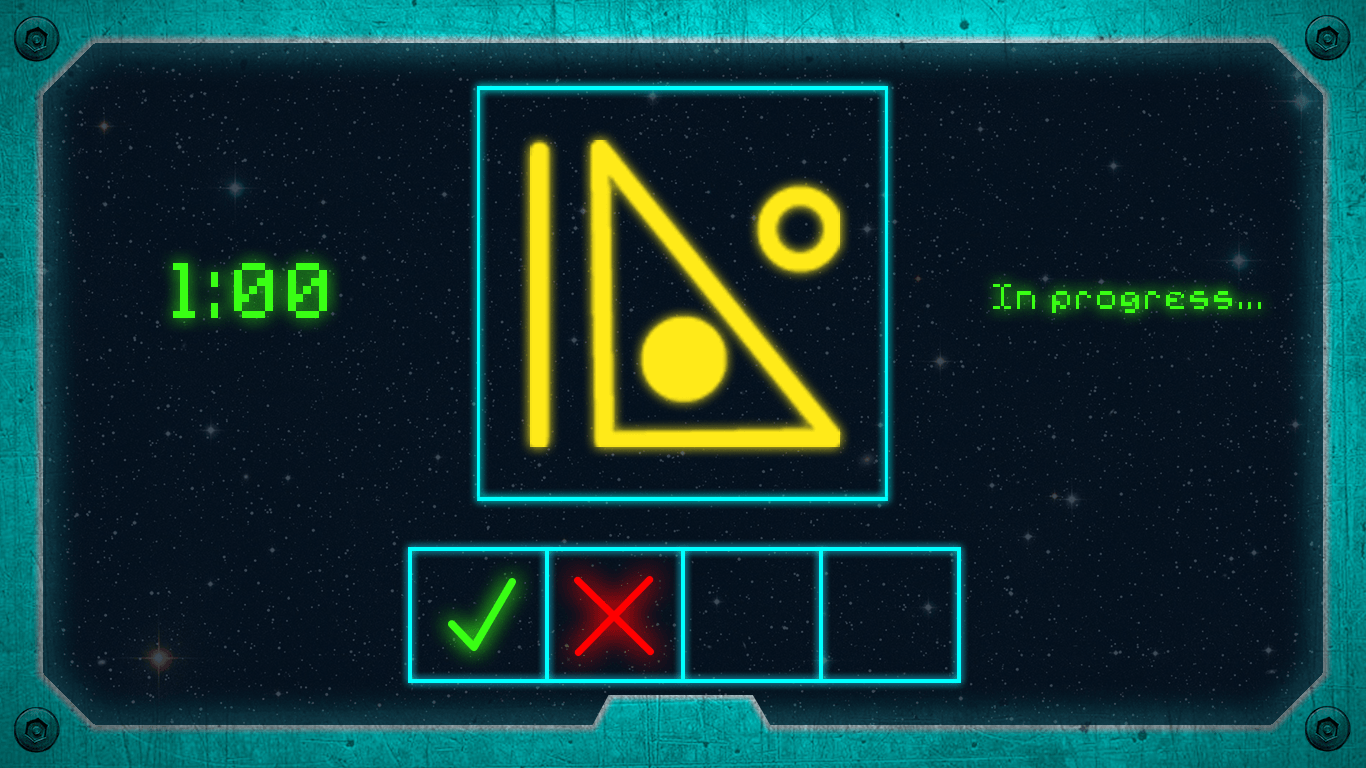
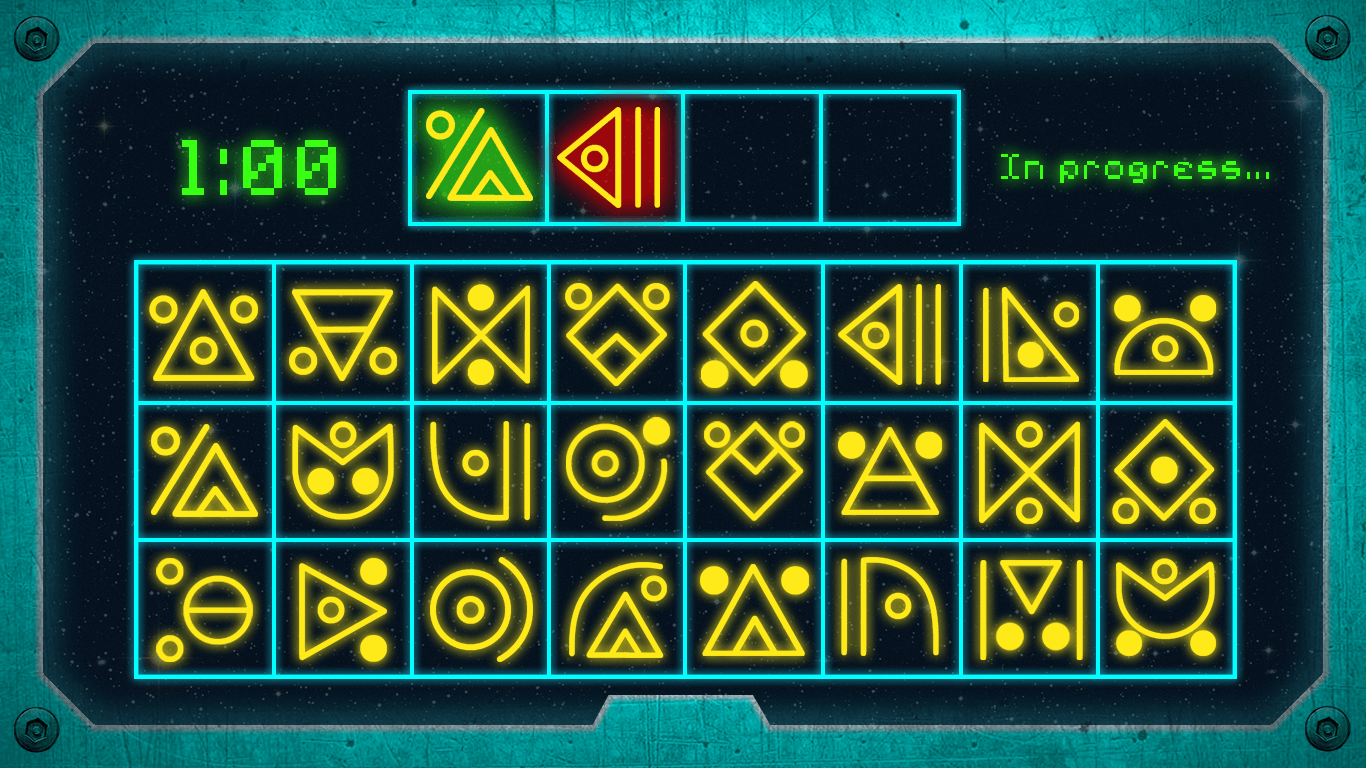
Launch
• Playtesting
• Presenting
• Launching
• Playtesting
• Presenting
• Launching
Impact
The game was a hit with the client and their employees, who quickly embraced its collaboration and lighthearted competition. Teams began tracking their scores and playfully ranking them against one another after each session, adding an organic layer of friendly rivalry that extended the game's engagement well beyond the initial meeting. The symbols sparked particularly enthusiastic responses—with the client reporting that employees often laughed at the creative, sometimes absurd descriptions their teammates came up with to distinguish the symbols from each other. This not only kept the energy high during gameplay, but also reinforced the project’s core goals of encouraging connection, communication, and fun during a time of widespread isolation.
